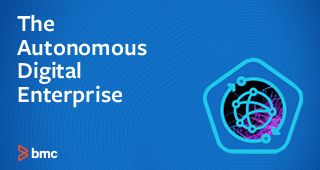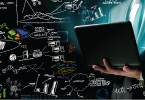Healthcare is changing rapidly, even more in 2020 than anyone could have predicted, and it’s been a trial by fire for a lot of the technology. According to a recent Accenture study, 94 percent of healthcare executives said innovation in their organizations has accelerated over the past three years due to emerging technologies and 89 percent are already experimenting with them—and that was pre-pandemic.
The study included a theory they call “DARQ,” which encompasses distributed ledger technology, artificial intelligence (AI), extended reality (XR), and quantum computing. Here we’ll take a look at those and others being implemented now and fast approaching, and how they can improve not only healthcare, but also the experience for patients and the workforce.
1. Distributed ledger/Blockchain
The distributed ledger, or blockchain, system of facilitating data exchange is already being used in healthcare to transfer records and patient information for billing and claims, but it can also track drugs and medical supply chains and even house genetic code. The multi-threaded nature of the technology ensures that each party is sharing the same, continuous, accurate information with a reduced probability of tampering or manipulation, which is vital when you consider the staggering number of healthcare data breaches.
Harvard Business Review recently looked at blockchain through the lens of health record management, saying, “By owning our medical and other personal data, we could solve access, security, privacy, monetization, and advocacy [issues]. The key is to take advantage of existing technologies to manage our data according to our own terms of use.”
They go on to explain that blockchain allows people to personally control their data, which is virtually unalterable, on a peer-to-peer basis. This type of data collection and dissemination is also being used as part of a pandemic planning “initiative to integrate, aggregate, and share” verified and anonymized global, local, and agency data to trace and get ahead of the spread of the coronavirus.
In China, blockchain technology helped fast-track insurance claims processing and mobile pay-outs at the onset of the coronavirus in Spring 2020. “Claim applicants can submit their supporting documents as evidence while investigation firms can get immediate access to them on the blockchain. All parties involved can see the entire process,” an Ant Financial spokesman in Beijing told the South China Morning Post.
2. Artificial intelligence (AI)
The adoption and integration of AI into processes and protocols walks a fine line between enabling a simple user experience and potentially impacting the human workforce. On the low end of AI, you can already ask Amazon’s Alexa to query WebMD, but ideally, AI will also support mundane tasks like billing, claims, and bad debt reduction so staff can instead focus on work that involves critical thinking, analysis, and decision-making. On the treatment end of the spectrum, it’s been deployed in diagnostic trials, such as mammography, where it reduced instances of false positive cancer diagnoses, and in the prediction of heart attacks and strokes.
A recent Emerj survey of healthcare executives found that over half of its respondents believe AI will be ubiquitous in healthcare by 2025. The survey also identified personalized medicine and drug development as ripe for AI, given its ability to use natural language and shave significant time off of otherwise lengthy processes.
Dr. Eric P. Weinberg, professor of clinical imaging sciences at the University of Rochester Medical College, adopted AI into his environment with the goals of improving efficiency and accuracy, freeing up personnel to do more meaningful tasks, and reducing work fatigue, as he wrote in a piece for the American College of Radiology. He drove the implementation of an AI tool to detect—but not diagnose—intracranial hemorrhages on a CT scan.
“The AI tool [was] designed to improve our workflow. [It] was extremely accurate at finding both obvious bleeds and extremely subtle bleeds…which can easily be missed by junior residents or even by experienced faculty when the caseload gets heavy,” he shared. He also noted that AI-read scans helped shorten the turnaround time between completing the scan and issuing the report to the doctor who requested it.
3. Extended reality
Virtual reality (VR)—wearables, augmented reality (AR)—social media image filters, and mixed reality (MR)—bringing virtual objects into a physical space where you can interact with them—are fairly recognizable terms these days, but the next evolution, extended reality (XR), encompasses all of those plus future technologies that will marry the experience of the real world with the immersive technology designed to simulate it.
According to Visual Capitalist, XR is projected to be a $209 billion market by 2022, with 71 percent of that in the healthcare sector, where it’s already in use for everything from headsets for pain and emotional control as an alternative to narcotics to 3D spatial diagnostic imaging. Going forward, XR is expected to have uses that include replacing cadavers as a no-risk training tool for medical students in labs.
4. Quantum computing
Supercomputing is an evolution of processing power beyond the average PC, but quantum computing goes exponentially beyond that, collapsing years into seconds. According to a recent study, the quantum computing market that was valued at $507.1 million in 2019 is projected to grow at a CAGR of 56 percent to reach almost $6.5 billion by 2030.
SD Global explored the idea that it could bring healthcare closer to patients by significantly speeding processes such as genetic sequencing, retinal imaging, and clinical trials by handling those massive data sets much faster. It could also enable personalized healthcare, down to the patient DNA.
Mark LaRow, CEO of patient-matching services provider Verato, tells Healthcare IT News that he envisions it as a way for teams of clinicians who currently use disparate tools and data collection methods to better communicate with each other and their patients. “Ultimately, I believe that these technologies will become so reliable that it will be deemed unethical for a clinician NOT to consult with a powerful AI-informed computing system to double-check a diagnosis and to recommend a treatment regimen,” he says.
According to Dr. James M. Dzierzanowski, executive director of Innovation and Strategic Advisory Services at Kaiser Permanente, a partner approach to implementation and taking advantage of rising talent will help ensure successful adoption when the time comes. “It’s still fairly nascent technology. I would recommend [working] with various industrial partners [and developing] strategic plans that will enable companies to rollover to this new technology,” he explains to AIMed. “We may [eventually] need a new workforce that deals with it [and I’m beginning] to see more people coming through university with statistics and data science knowledge [which] will fit into the application development for quantum in the future.”
5. Automation
Automation is prevalent in current patient contact roles such as automated appointment reminders and check-ins, but it also has potential behind the scenes and in the extended processes related to healthcare. A 2019 study by McKinsey looked at where automation could benefit the insurance/payer arena, saying it can deliver “greater workforce efficiency, lower demand for manual activities (through improved auto-adjudication and self-service capabilities), increased revenue (by refocusing employees on new activities), and often higher consumer satisfaction [especially in] data collection and processing.”
The study estimates costs savings “up to 30 percent over five years for payers who automate manual processes, and because the technology can run 24×7, tasks that took days can collapse into minutes and create a better user experience.”
PwC considers robotic process information (RPA), most commonly known as “bots,” as most useful for supply chain improvements. “Basic bots replace a number of human activities and can reduce cost and human errors while increasing compliance and efficiency,” they say. They also point to improved safety, quality, and employee morale and recommend leveraging the technology alongside wholesale improvement plans to achieve the best results.
Lessons to learn by
Each of these technologies stand to benefit the experience of healthcare workers and patients:
- Blockchain: Improve trust
- Artificial intelligence: Better accuracy of diagnosis
- Extended reality: Enhance physician training
- Quantum computing: Speed complex computing tasks and diagnosis
- Automation: Eliminate repetitive manual tasks and boost productivity
As value is realized, each must also meet a myriad of compliance, security, and privacy standards, especially concerning patients and their data. The learnings from the recent pandemic spotlight on these technologies will inform their innovations as they evolve, and the technologies that are sure to follow.
The Autonomous Digital Enterprise
These postings are my own and do not necessarily represent BMC's position, strategies, or opinion.
See an error or have a suggestion? Please let us know by emailing blogs@bmc.com.







